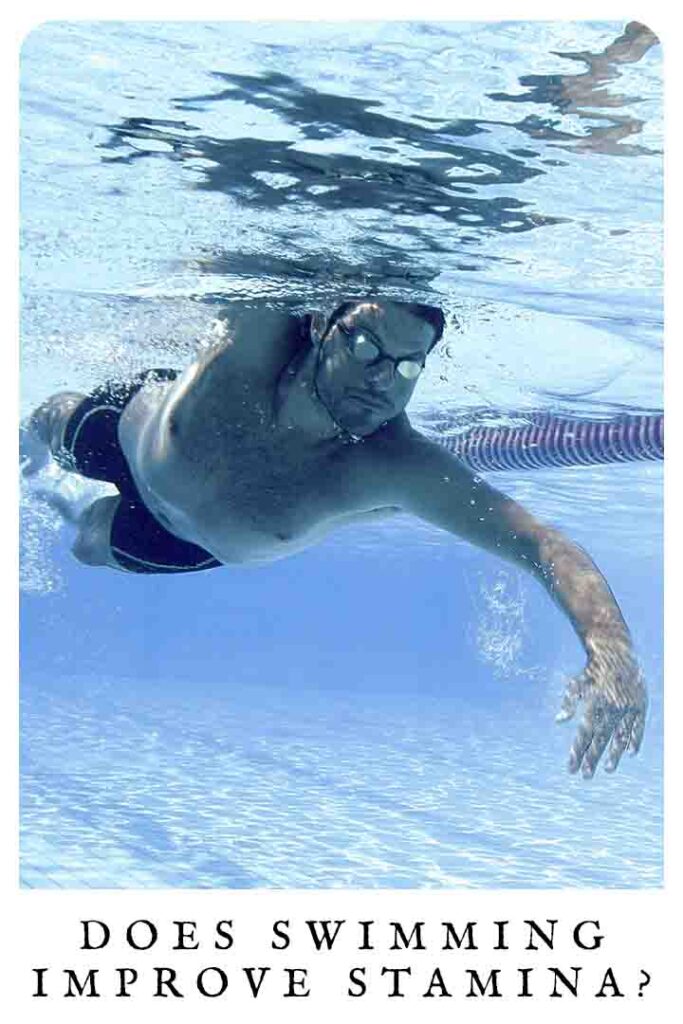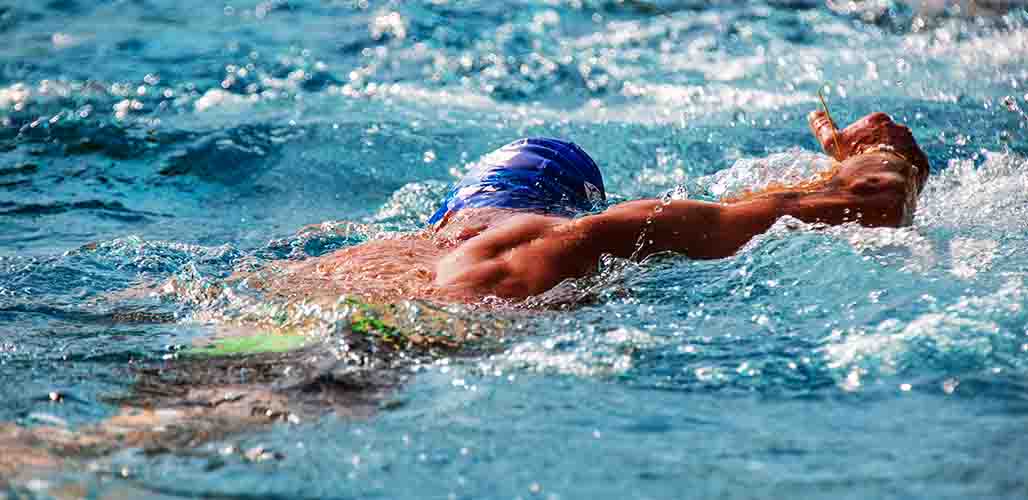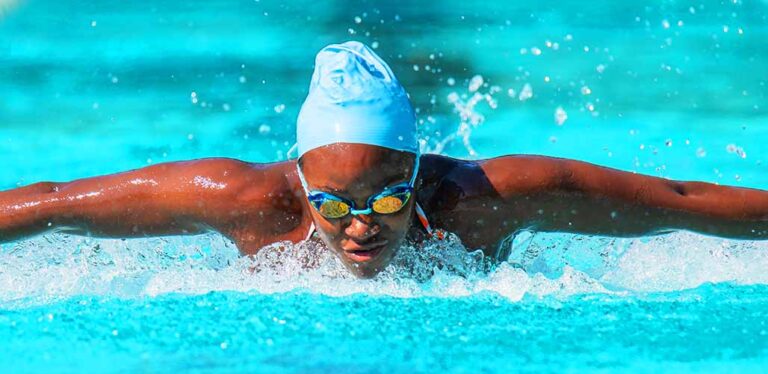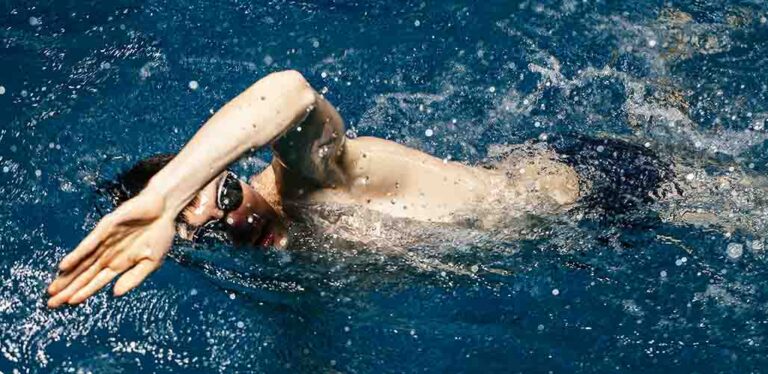How To Increase Stamina While Swimming
Since starting swimming, I’ve noticed several benefits, including better overall fitness and mental wellbeing. The health benefits of swimming are endless. This low impact sport enhances your cardiovascular endurance, encourages weight loss, and even improves your joint health. But, one of the less spoken about benefits of swimming is the impact it has on your stamina levels. In this guide, I’ll explain how to increase stamina while swimming. And we’ll look at why swimming can improve your stamina, and whether it’s better than other sports for good stamina and lung capacity.
Contents
- Does swimming improve your stamina?
- How does swimming improve stamina?
- Does swimming improve running stamina?
- Does swimming improve lung capacity
- How to start swimming to increase your stamina
Does Swimming Improve Your Stamina?
Yes! Swimming can improve your stamina and give you the energy and strength required to practice intense exercises for extended periods. Swimming drills can be high intensity. They usually involve multiple swimming movements at any one time, since your arms and legs tend to use different motions. Because drills demand time in the water, you’ll notice that your swimming stamina increases as you keep practicing.
How Does Swimming Improve Stamina?
There are several ways in which swimming can help improve your stamina. The following 4 factors work together to help you build more endurance while swimming.
1. Burns More Calories
Different swimming strokes have different advantages in terms of calories burned. Swimming offers several ways to burn calories and improve stamina. You can swim laps using various strokes, increase resistance with an aqua belt or wrist and ankle weights, and engage your entire body in the water in a full-body workout.

2. Builds Stronger Muscles
Most swimmers partake in cross-training. This means practicing a different dryland activity during short breaks from swimming. Swimmers can build muscle and acquire abilities that will make them faster and stronger at swimming by attempting new physical activities. Jumping rope, yoga, lifting weights, and other exercises are all examples of cross-training for swimmers.
When swimming with the correct technique, your muscles lengthen and become more flexible. This is primarily why competitive swimmers typically have wider shoulders and incredibly toned bodies.
3. Increases Your Aerobic Capabilities
Swimming is an aerobic activity that requires you to breathe steadily and slowly. To improve your aerobic capability while swimming, try increasing the number of strokes you take between breaths. This is a great idea to try with a friend to watch over you, so they can help you out if you become dizzy or lightheaded. Don’t push yourself too far too quickly. Holding your breath for longer is also something you can try safely on land.
4. Involves Full-Body Workout
Swimming improves stamina as it is an excellent full-body workout. The following muscles are involved during swimming:
- Muscles in the lower back and core maintain stability in streamlined positions in the water to lessen drag.
- Shoulder and deltoid muscles aid in the hands’ appropriate entry into the water and their ability to extend far.
- Muscles in the forearms that are used when tugging in the water.
- Muscles in the upper back that keep the shoulders steady when swimming.
- Glutes and hamstring muscles help propel the body forward while maintaining balance.
Does Swimming Improve Running Stamina?
Yes, swimming does improve running stamina. While it may not be the primary approach to improving running stamina, swimming helps runners maintain it. The full-body motions necessary for a strong swim technique build up muscles that aren’t engaged when running. This helps to balance muscular imbalances and ultimately keeps the runner safe.
Swimming sprints improve your cardiovascular fitness, increasing your running agility and speed. Building up your endurance while swimming slower over a longer time will help improve your running stamina. Swimming can also help you practice regulating your breathing, which will benefit you during running.
Is Running or Swimming Better for Stamina?
Both running and swimming are aerobic exercises that raise your heart rate and improve your cardiovascular health. But kicking in water requires more effort than taking a step while running because of the resistance you’ll experience in water. Swimming is a form of resistance training that is better for stamina than running.
Does Swimming Improve Lung Capacity?
According to a 2016 study, swimming increases lung capacity and endurance. During a challenging workout, such as during swimming, your heart rate increases as a result of your body needing more oxygen. Your lungs provide that oxygen, which makes you breathe more forcefully while you work out.
As you train consistently, your lungs improve at meeting these demands, which can eventually lead to certain anatomical modifications, such as increased lung capacity.
How To Improve Stamina While Swimming
Whether you are an amateur or an experienced swimmer, here are a few techniques to boost your stamina.
1. Start Slow
Patience is essential if you want to increase your swimming endurance. Your drive is at an all-time high when you’re starting to learn to swim. However, as the excitement of the beginning wears off, you can lose the motivation to continue with the same zeal.
Starting slowly will also help you feel more at ease in the water. Going to the pool two to three times a week is advised for beginner swimmers to increase their stamina.
2. Include Dryland Exercises
By including some dryland strength training that is specifically designed for swimming, your body recruits and utilizes muscles more efficiently, which will give you more power throughout your swim stroke.
Include specialized dry land workouts designed to improve your heart rate and lung capacity and strengthen muscle groups used in the water. Add some upper body weight, core, and back workouts to your strength-training regimen to begin cross-training for swimming.
3. Maintain a Consistent Pace
The most important aspect of any activity to increase stamina, including swimming, is maintaining consistency in your training. Include sets in your exercises where you complete a fixed number of repeats over a set distance while attempting to maintain a constant speed. Start off gently and steadily before gradually increasing your speed.
4. Practice Multiple Strokes
Different swimming strokes involve the use of different muscles. Swimming drills enable you to deconstruct the intricate swimming strokes into their component parts. Each stroke must be practiced carefully and frequently until your body learns how to control that movement.
Does Swimming Improve Stamina? The Final Takeaway
Swimming is a great way to improve your stamina. It burns your calories, builds strong muscles, increases your aerobic capabilities, and involves a full-body workout. Besides, being a form of resistance training, is a better way to improve stamina than running.
If you want to swim to improve your stamina, start slow and steady so your body gets accustomed to the strokes. Practice different strokes, since each has a different impact on your body and the calorie burning process. Maintain a consistent swimming speed during your training and pair your swimming drills with dryland strength training to build a strong stamina.
More Fitness and Swimming Advice
References
- Lazovic-Popovic, B. (et al), ‘Superior Lung Capacity in Swimmers: Some Questions, More Answers!’, Revista Portuguesa de Pneumologia (2016)







